Rodent Habitat
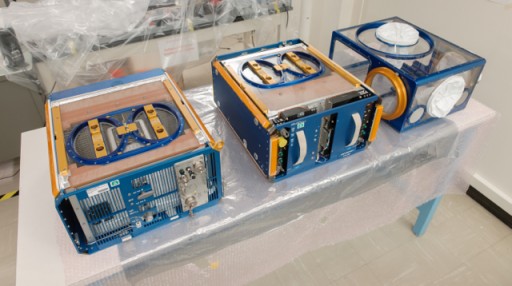
One of the highlighted Expedition 41/42 experiments is a new Rodent Habitat to be deployed aboard ISS. Space Shuttle missions flew these habitats on a regular basis to examine changes in mice and rats during short duration flights, but no such facility existed for ISS to conduct studies on a longer time scale of up to a month or more. To comply with ISS standards for both, operations and safety, the Rodent Habitat used on the Shuttle had to be modified.
The first experiment, known as Rodent Research-1 is a pure demonstration that only serves the purpose of verifying the hardware is functional and the mice are receiving the proper support (air, light, food, water, waste removal) that allows them to live for several months aboard the Space Station as later experiments may be up to three months in duration.
The Rodent Habitat itself is built to comply with the Express Rack standards for easy integration into ISS laboratory systems. The payloads consist of a Rodent Habitat for installation aboard ISS and a Rodent Transporter that facilitates the animals during ascent aboard the SpaceX Dragon. An Animal Access Unit AAU allows crew members to deliver the mice from the transporter to the habitat and to retrieve the animals for science operations. All components were developed at NASA’s Ames Research Center.
Rodent Habitat Components: Habitat, Transporter & Access Unit

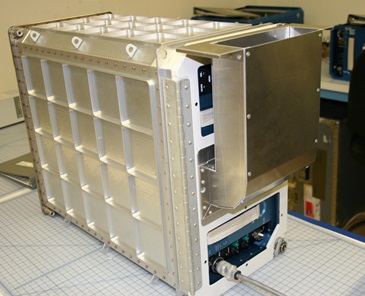
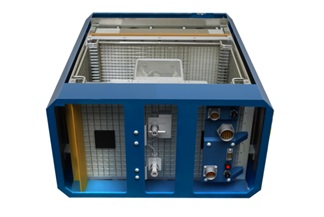
Each Rodent Habitat can support up to ten mice or six rats providing sufficient room for the animals. Grids on the internal panels of the habitat can be used by the animals to hold onto while waste and air can pass through the grid. The habitat consists of two sides, five animals can be facilitated on each side.
Before the animals are released inside the habitat, the unit is powered up and the food bars are installed in the habitats. Also, the water supply is filled with sufficient water for the mission duration. Food and water supply are not topped up during the experiment and are monitored to ensure that the experiments are ended before the food supply is exhausted. Clean up and containment bags are used to hold waste from the animals during the mission.
Several fans are installed to deliver fresh air inside the habitat and remove carbon dioxide from the chamber. Contamination of ISS is avoided by using filters in the air in and outlets. The habitat includes lights that are operated by a timer to simulate day and night conditions. To monitor the status of the animals, the facility includes visible-light cameras and infrared imagers that will provide insight into the health status of the animals. Sensors for temperature, pressure and relative humidity are installed in the habitat. No active thermal control is used – the facility relies on ISS ambient temperature being warm enough for he animals.
The Rodent Transporter is also a front-breather that includes consumables for up to 20 mice and up to ten days – supporting a cargo load time of L-25 hours and up to two launch attempts before the unit has to be replaced. Once aboard ISS, the animals are transferred to the habitat when it has been set up. This allows the habitat to launch as a passive payload without any power requirements.
The Animal Access Unit AAU interfaces with the Rodent Transporter and the Rodent Habitat and the Habitat, Mouse Transfer Boxes and the Microgravity Science Glovebox. Crew members can insert their hands via glove interfaces to simply pull the mice from one container and place them into another. The AAU is cleaned and disinfected after each use. The Rodent Transporter and Rodent Habitat are returned to Earth for cleaning and refurbishment for the next mission.
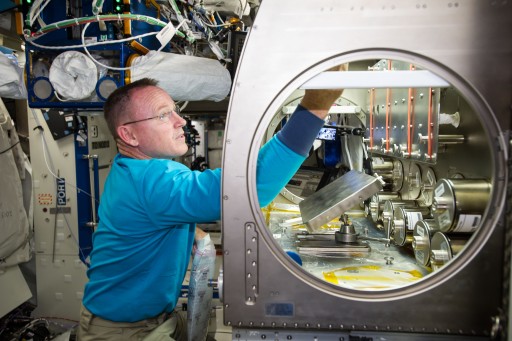
Rodent Research-1 will fly 20 mice to ISS – 10 mice from NASA and 10 mice from CASIS. The ten NASA mice are 16-week old C57Bl/6J lab mice females. The CASIS mice are five MuRF-1 knockout and five wild type, C57Bl/6 – all female. As part of the operational protocol, two of the mice are euthanized and dissected inside the Microgravity science glovebox to harvest their spleens, livers and tissues for fixation or stowage in the MELFI freezer for later return to Earth to assess the health status of the mice.
The remaining eight mice are euthanized and preserved (formalin, ethanol or MELFI) for return to Earth to be weighed in order to ensure the mice have not lost weight over the course of their stay aboard the Rodent Habitat which will confirm that the supply of water and food was sufficient.
The Rodent Research-1 study has the objective of testing the capabilities of the new habitat as part of the one-month mission. Furthermore, the experiment will point to any deficiencies in operational protocols and equipment as all required operations for science experiments are performed including euthanization, dissection, tissue preservation via fixation and stowage in MELFI. Additionally, the Bone Densitometer will be tested in operational conditions.
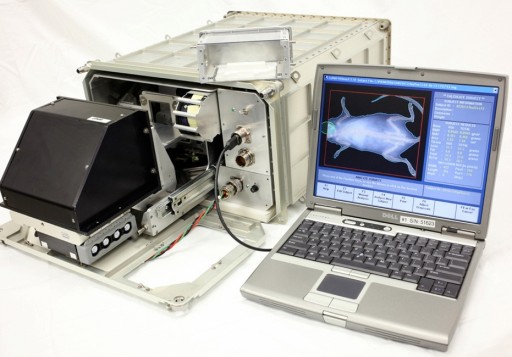
The Bone Densitometer BD is a space-rated device to measure the mass per unit volume (density) of minerals in bone. BD will be used to objectively measure the bone loss in mice during orbital space flight which is an essential source of data needed in the development of countermeasures to bone loss in humans during long-duration space missions. Studying bone loss in space provides insight into bone-loss syndromes occurring on Earth.
The gold standard for bone density measurement is a method known as DEXA – Dual Energy X-Ray Absorptiometry. This method uses two x-ray beams at different energy levels that are aimed at a specimen’s bones. The bone mineral density can be determined by measuring the x-ray absorptions at the two energy bands while subtracting soft tissue absorption. The method is suitable for the determination of bone mineral density in humans, mice and other laboratory animals.
The BD payload was developed by Techshot can measure bone density, soft-tissue density, lean/fat ratio and total animal mass to support a variety of studies.
Future studies performed with the habitat will provide valuable information for human spaceflight and lead to discoveries in basic biology. Changes that are being looked at include bone loss, muscle loss, immune system changes, cardiovascular changes, nervous system changes, reproductive and sensorimotor changes. The goal of the studies will be to discover what cellular, genetic and molecular mechanisms are responsible for these changes.
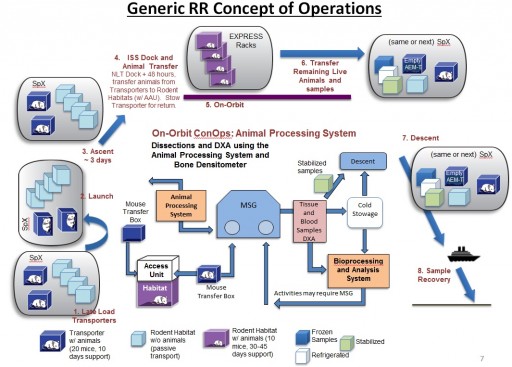
Future rodent research will provide valuable information about changes that occur in the body that are directly relevant to humans in space and associated countermeasure development. Also, results will be valuable for human aging and disease research. Some of the changes that are observed in space can help in the development of new drugs to treat diseases on Earth.
The SpaceX-4 mission is delivering all hardware needed for the experiment to ISS including the Transporter, Habitat and Access Unit as well as equipment needed for the Microgravity Science Glovebox to perform dissections and preservation. The mice will also be delivered by SpX-4 for a 21 to 30-day stay inside the habitat before being preserved using formaline or stowage inside MELFI for return of the specimens and contaminated hardware aboard SpX-5 in early 2015.
The first operational science mission, Rodent Habitat-2 is scheduled for launch aboard SpX-6 in early 2015. Two experiments will be run as part of RD-2, one in which rodents are injected with a vaccine that activates the immune system in a manner similar to viral infection to study antibody responses in space.
The second study focuses on the effect of elevated intracranial pressure occurring in microgravity on the blood-brain barrier which may provide insight into neurological changes, such as impaired vision or reduced cognitive ability during long-duration missions.
